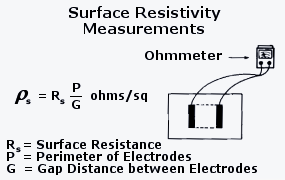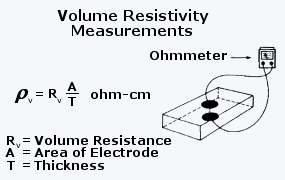Antistatic VS Static Dissipative materials are completely dependent on static electricity and its properties. Let’s get into the details and learn more about the phenomenon.
Antistatic VS Static Dissipative Plastics
To understand the meaning of Antistatic vs. static dissipative, we first need to understand the meaning of static electricity. As the name implies, it is electricity at rest. The electrical charge transfers electrons that occur when there is a rubbing, sliding, or breaking of material, generating electrostatic voltages.
Regarding electrostatic discharge (ESD) plastics, These plastics are designed to reduce static electricity to protect electrostatic-sensitive devices or limit flammable gases or liquids. These plastics are available in many types, anti-static and static dissipative being the most prominent.
The Importance of Anti Static Plastic and Static Dissipative Plastics

Build-up static electricity can occur in an insulating material like plastic when the charge stays in the restricted areas of the contact between the materials. This electrostatic voltage can later be discharged with an arc or spark when it comes in contact with a body with a significantly different electrical potential. Good examples are the human body and microcircuit.
Electrostatic discharge, a sudden flow between two electrically charged objects, can have disastrous effects. Coming in contact with ESD, a person can face a mild to strong shock and, in worst cases, DEATH. Electrical sparks are even bigger bad news for environments containing flammable gases and liquids. But the most common fatalities of ESD are sensitive electronic components. Some micro-electronic parts can be damaged or destroyed by ESD as low as 20 volts.
The ESD damage to a component can result in wrong readings, periodic breakdowns, and even permanent, unrepairable damage. All of that can trigger production downtime and expensive repairs. The main reason to use Anti static plastic and static dissipative plastics is to slash ESD risk and reduce malfunctions significantly.
Interesting Read – What is Shore Hardness Scale? | The Complete Guide
Antistatic vs. Static Dissipative
For conductive thermoplastics, the categorization is completely dependent on their surface resistance. That metric measures how seamlessly an electric charge can travel across a substance.
Static dissipative plastics have a surface resistance of >1 x 105 ohms/square <1 x 1012 ohms/square and let electrical charges dissipate typically within milliseconds. Static dissipative materials allow the charges to flow to the ground slowly and in a more guided or controlled manner preventing discharge to human contact.
On the other hand, Anti-static plastic materials have a surface resistivity of 1010 to 1012 ohms/cm and suppress triboelectric charging (The creation of electric charge by rubbing one material on another). Antistatic plastics can suppress initial charges, prevent the build-up of static electricity, and slowly decay static charge from a hundredth to several seconds.
Conventional anti-static and static dissipative parts have proved to significantly help reduce ESD without trading off on the strength, chemical, physical, mechanical, and thermal properties. The most common anti-static and static dissipative application is found in automotive, packaging, medical devices, appliances, and electronics & electrical.
Resistivity Test Methods
Surface Resistivity:

Source - gotopac.com
As said earlier, surface resistivity is the most preferred measurement method for thermoplastic materials to dissipate electrostatic charges.
Within the surface resistivity method, several measurement techniques can be utilized. However, the most accepted test method is ASTM D257. It measures resistance via an ohmmeter between two electrodes applied under load to the tested surface. The thermoplastic’s heterogeneous makeup leads to using electrodes instead of point probes.
Simply touching the surface with a point do contact might not give accurate readings consistent with the overall part. Maintaining good contact between the sample and electrodes is crucial, which requires a significant amount of pressure. The resistance reading is then converted to resistivity to account for the dimensions, which can alter depending on the shape and size of the test samples.
As shown in the image above, Surface resistivity is equal to resistance times the perimeter of the electrodes divided by the gap distance, yielding ohms/square.
Engaging Read – What is Warpage? | Causes of Warpage | Warpage Variations
Volume Resistivity:

Source - gotopac.com
Volume resistivity is utilized to assess a conductive additive’s relative dispersion throughout the polymer matrix. It can be roughly compared and related to EMI/RFI shielding effectiveness in some conductive fillers.
The technique of testing volume resistivity is quite similar to surface resistivity. However, electrodes are placed opposite the test sample. ASTM D257 also relates to volume resistivity and a conversion factor again completely dependent on electrode dimensions and part thickness used to get the resistivity value from a resistance reading.
Volume resistivity calculation as per the image above – resistance times the surface area (cm2) divided by the thickness of the part (cm), yielding ohm-cm.
FAQs
Below are the frequently asked questions on anti static plastic. Let’s dig deep to know more.
What is the difference between static dissipative and conductive?
Static dissipative materials are classified based on their electrical resistance properties. Their resistance is measured in ohms (as already explained well above). On the other hand, conductive parts are measured by their low curing temperature.
What is the static dissipative range?
Static Dissipative materials are typically in the surface resistance range of 1×10 5 ohms/square but less than 1×10 11 ohms/square.
What are ESD safe materials?
ESD safe materials are often created by blending an optimized-based material – ABS, PETG, or PC with an additive are the prime examples. The base material plays an important role in determining the mechanical properties of the finished part, such as strength and flexibility.
Is PEEK material ESD safe?
Yes, PEEK material is ESD safe, and thus it is extensively used in the electronics and electrical industries. PEEK ESD has great dimensional stability and can easily be processed in tight tolerances.
Is PVC static dissipative?
PVC 300 is a widely available plastic sheet that is static dissipative. It is designed to control static electricity for various end uses.
Suggested Read
- LDPE Vs HDPE: What are the Differences and Similarities
- Plastics Vs. Polymers | What are the Differences?
- PEX Vs PVC | The Definitive Guide
- Plexiglass Vs. Acrylic | What are the Differences and Similarities?
- 6 Best Plastic Molding Techniques | A Complete Analysis
- What is Polystyrene? | The Definitive Guide
- Plastic Thermoforming Mold: Information about Male Vs. Female Molds
- Top 10 PVC Manufacturers and Suppliers in the World
Conclusion
That was my take on Antistatic vs. Static Dissipative Plastics. I want to say that ESD-proof plastics are quite common and have successfully made their way into the mainstream plastic industry. Utilizing them properly after determining all the necessary readings can make your products 100% safe for human contact.
Have a lovely day ahead.
Quick Navigation

